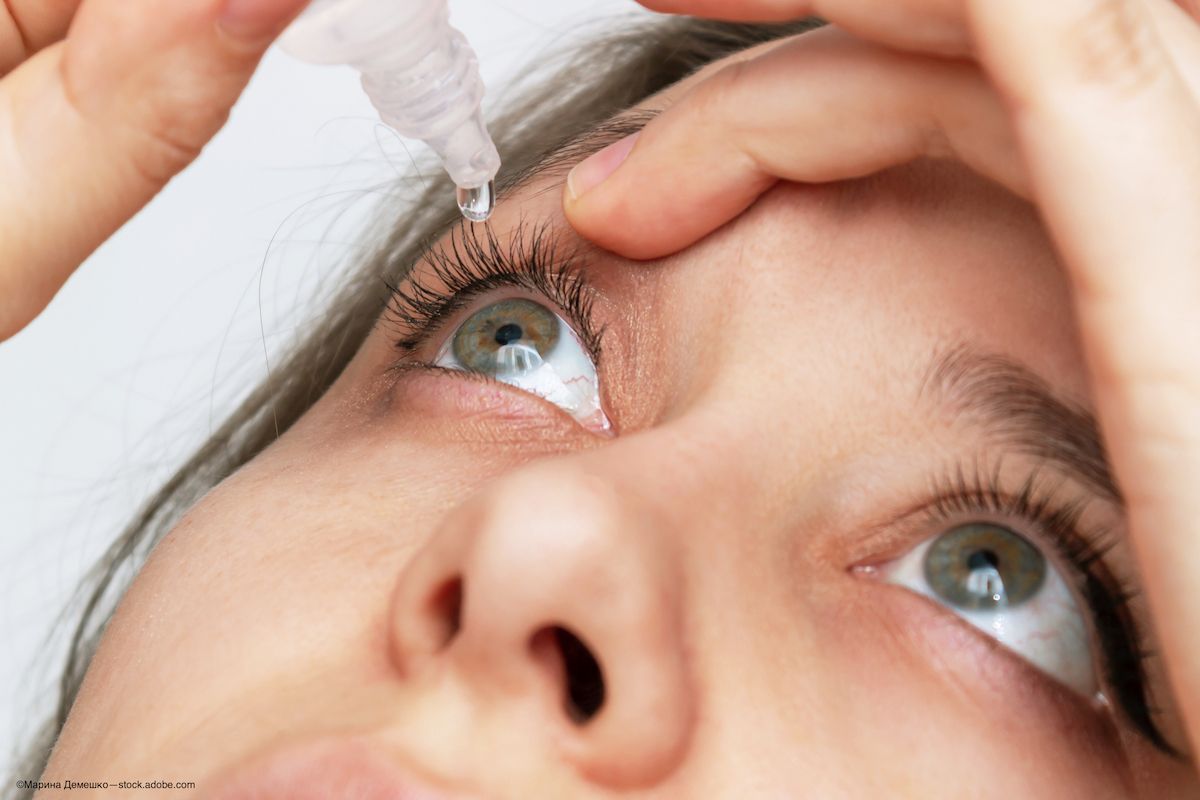- Therapeutic Cataract & Refractive
- Lens Technology
- Glasses
- Ptosis
- AMD
- COVID-19
- DME
- Ocular Surface Disease
- Optic Relief
- Geographic Atrophy
- Cornea
- Conjunctivitis
- LASIK
- Myopia
- Presbyopia
- Allergy
- Nutrition
- Pediatrics
- Retina
- Cataract
- Contact Lenses
- Lid and Lash
- Dry Eye
- Glaucoma
- Refractive Surgery
- Comanagement
- Blepharitis
- OCT
- Patient Care
- Diabetic Eye Disease
- Technology
Positive phase 2 results of OK-101 for dry eye disease revealed by OKYO Pharma
According to OKYO Pharma, the first-in-human, randomized, double-masked, placebo-controlled trial of OK-101 “established a clear and informed path for further development in Phase 3 registration trials.”
(Image credit: Adobe Stock / Марина Демешко)

OKYO Pharma has reported positive safety and efficacy results in its Phase 2 of OK-101 ophthalmic solution in subjects with dry eye disease (DED).
According to OKYO Pharma, the first-in-human, randomized, double-masked, placebo-controlled trial of OK-101 “established a clear and informed path for further development in Phase 3 registration trials.”1
The trial was conducted at 6 sites across the US and enrolled 240 subjects with DED dosed twice-daily. Patients were randomly divided into 3 cohorts, with one of the cohorts dosed with 0.05% OK-101 (n = 80), a second with 0.1% OK-101 (n = 80), and the third cohort with vehicle (n = 80). Duration of treatment was 14 weeks with a 2-week run-in period on placebo.1
Jay Pepose, MD, PhD, Founder and Medical Director of Pepose Vision Institute and Professor of Clinical Ophthalmology at Washington University School of Medicine in St Louis discussed the results in a press release from OKYO Pharma.
“It is remarkable that in this first in human study of OK-101 ophthalmic solution, an analysis of all randomized subjects demonstrated a persistent, statistically significant improvement in multiple dry eye-related symptoms as early as day 15, along with a sign, total conjunctival lissamine green staining, by day 29. Ameliorating this unique constellation of signs and symptoms may reflect the differentiated mechanism of action of OK-101. Also of note, drop comfort was excellent and the safety profile favorable. This is evidenced by fewer subjects discontinuing study medication in the OK-101 arm (2.5%) than the placebo arm (3.8%) due to treatment-emergent adverse events. This highly favorable tolerability profile is very significant because many patients commonly discontinue currently available dry eye medications due to unwanted side effects, such as blurred vision, conjunctival redness or altered taste sensation (dyseguesia),” said Pepose.
According to OKYO Pharma, the phase 2 results demonstrated superiority when compared to placebo in the sign endpoint of total conjunctival staining as measured by the Ora Calibra Staining Scale as early as Day 29 (P = 0.034). Furthermore, OK-101 demonstrated superiority when compared to placebo across at least two symptoms of DED including burning measured by the Ora Calibra 4-symptom questionnaire as well as burning/stinging measured by a visual analogue scale as early as Day 15 (P = 0.04 and P = 0.03, respectively). A statistically significant improvement in blurred vision was also achieved at Day 29 (P = 0.01).1
“To our knowledge, there are no FDA approved DED drugs that have been shown in clinical studies to improve conjunctival staining, a primary “sign’” endpoint for DED drug approval,” said Raj Patil, PhD, CSO of OKYO Pharma. “OK-101 is a drug with multiple novel and differentiated mechanisms of action that include anti-inflammatory activity and restoring the mucin secreting goblet cells in conjunctiva, as observed in animal models of DED. In addition, we see improvement in blurred vision, a primary “symptom” endpoint for DED drug approval, in OK-101 treated DED patients that is plausibly tied to enhancing the tear film stability and lubrication of the ocular surface by normalizing the mucin component in the tear film secreted by goblet cells. We will work with our scientific advisers and seek additional FDA guidance on next steps to designing a Phase 3 trial to confirm OK-101’s novel mechanism of action.”
OKYO Pharma plans to host a conference call in Q1 of 2024 to provide further data on the trial results once the company has finished a more comprehensive data analysis.1
